Straining the fruit pulp overnight I got 1.4 litres of juice. Following a National Trust recipe, I added to this 1300g of preserving sugar and heated it up gently to dissolve the sugar. It was a lovely dark pink color.
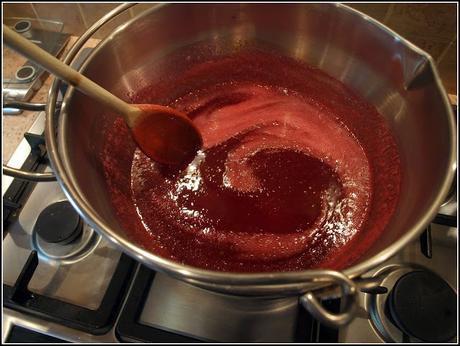
Then the mixture was boiled for about 10 minutes until it reached setting-point. I used the "cold saucer" method to test this. Last year my jelly came out rather too firm for my liking, so this year I adjusted it accordingly. I wanted the jelly to have just a little bit of wobble!
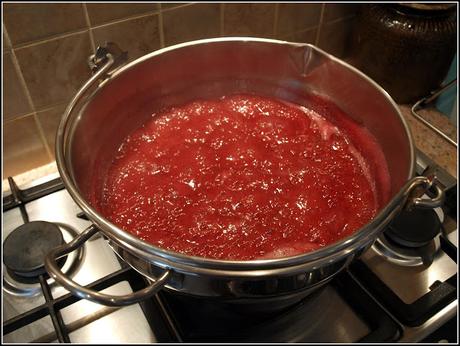
I was able to make 4 large jars, and two small jars of jelly, with just a little bit left over. I will use the half jar first because it wouldn't keep so well with that much air in the jar. I think I'll be having toast and "jam" for breakfast tomorrow!
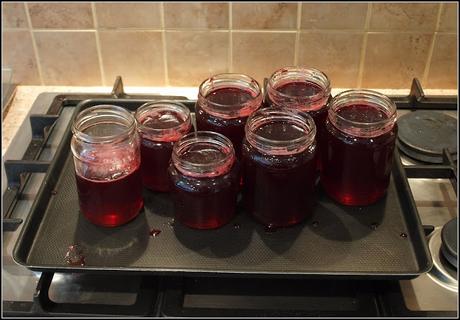
The Horseradish has also been duly processed, following another NT recipe - this time for Horseradish vinegar. We selected some of the best roots, peeled them with a vegetable-peeler and then grated them in a food-processor (phew, the fumes were powerful!).
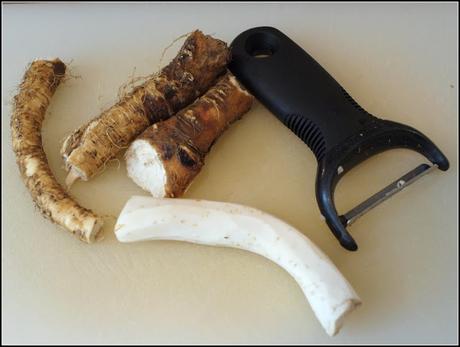
The grated Horseradish then went into a jar with some salt and a whole dried chilli, and was covered with hot vinegar. The recipe says to allow the vinegar to mature for six weeks before using it. You then remove the Horseradish and mix it with cream to make a sauce. Jane reckons the vinegar will be nice sprinkled over chips, especially when they accompany a grilled steak.
Lastly (an easy, 2-minute job), the Sloe Gin has been started.
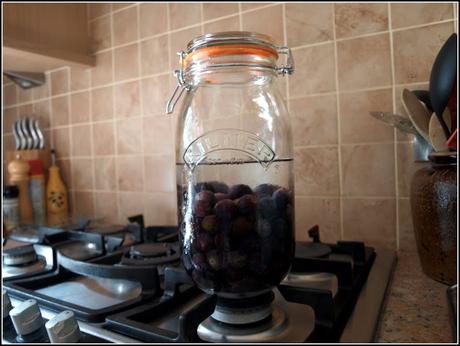
All I did was tip 600g of frozen sloes into a large Kilner jar and add 1 bottle of gin and 2 teaspoons of sugar. I will invert the jar once a day, and the juice of the sloes will soon begin to seep out and color the gin. It should be ready to drink by about Christmas-time.
